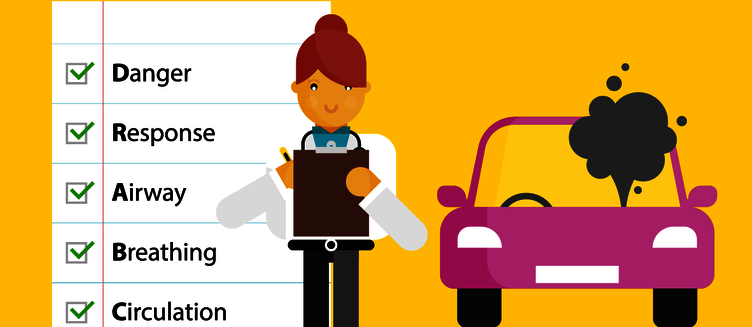What To Do If You're Involved in an Accident

You have arrived first on the scene of an accident, and although ambulances on average get to the scene within 8 minutes, there are some steps you can take that make every second count in life threatening situations and knowing what to do can make all the difference.
What not to do at the scene of an accident
We should probably start here as the list is slightly shorter than the things you should do. Aviva conducted a Driving Theory Test and they have learnt that there is a real hazy area surrounding what you should do when you are the first person at the scene of an accident.
A staggering one in ten people (12%) believe you should offer a drink or cigarette to a driver who is in shock after an accident, while just over one in 20 (7%) think you should try and move the person. These responses are probably likely to do more harm than good and if everyone learnt a few basic first aid steps together we could save thousands of lives. St John Ambulance have put together a step-by-step guide of what to do in this eventuality.
What should you do if you witness an accident?
Detailed below are a few easy, practical skills that anyone can learn, that could mean the difference between a life lost and a life saved.
1. Make the incident area safe
Isobel Kearl from St John Ambulance highlights the importance of this first step: “Often, the scene of an accident will present serious risks to safety due to the risk of oncoming traffic, and so it is important to make the incident area as safe as possible before tending to any casualties.”
She suggests parking a safe distance from the incident and putting your hazard lights on to warn oncoming traffic. If possible, put on a high-vis jacket and place warning triangles at least 45m from the incident in each direction.
You should also remember to turn off all engines, enforce a smoking ban and keep children away from the scene to reduce the risk of further harm.
2. Get help
Call the emergency services on 999 (UK) or 112 (EU). When the operator answers, state the service or services required, and give the following information:
- Your phone number in case you’re cut off
- Information about the location of the accident
- Description of the incident and the current state of casualties
Try to always keep a charged mobile phone in your car. If you don’t have a phone, send someone for help.
3. Assess Casualties
- See to those with life-threatening injuries first.
- Always assume any casualty in a vehicle has a neck injury, and if possible, support the head and neck continuously while you wait for the emergency services.
- Ask other bystanders for help.
4. DR ABC
Danger: Don’t approach until it’s safe.
Response: Treat those unresponsive first.
Airway: Tilt the head back and lift their chin to open the airway, checking it’s clear. If blocked, clear the mouth.
Breathing: Look, listen and feel for about 10 seconds. If unresponsive and not breathing, carry out CPR.
Circulation: If there’s severe bleeding, treat it immediately.
5. Carry out CPR
Only move onto this step if the casualty’s airway is open and clear. If they are unresponsive and not breathing, begin CPR immediately. Use a defibrillator if available and don’t leave the casualty.
6. If bleeding, apply pressure
Immediately apply direct pressure to the wound with gloved hands, dressing or clothing.
Secure dressing with a bandage to maintain pressure.
Treat for shock by loosening tight clothing and keeping their head low and legs raised.



